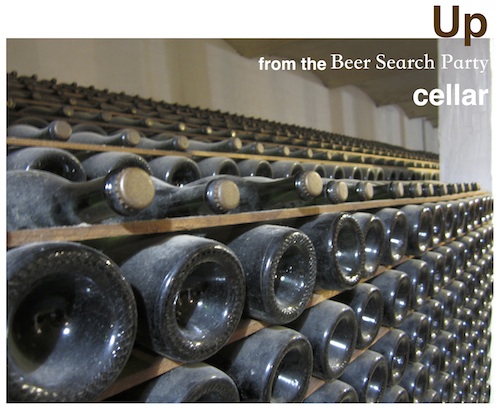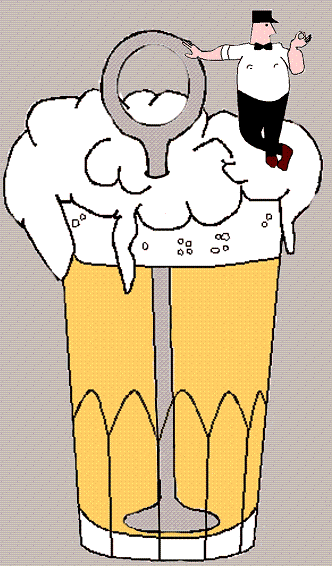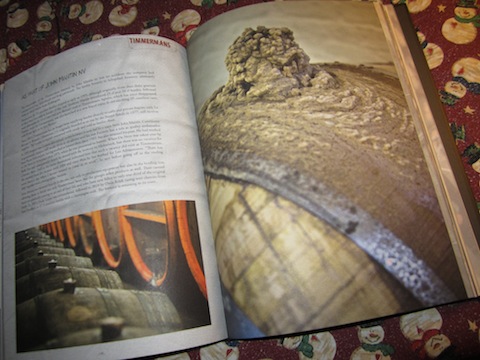
The Chimay characterized “Grande Reserve” or more simply as the “Blue One” is a dark Belgian ale that was initially a Christmas beer and that the website says “improves across the years.”
Chimay goes on to describe Ol’ Blue as an “authentic Belgian beer, whose tinge of fresh yeast is associated with a light rosy flowery touch, is particularly pleasant. Its aroma, perceived as one enjoys it, only accents the delightful sensations revealed by the odour, all revealing a light but agreeable caramelized note. ”

I first reviewed this beer back in October of 2009, This is a strong beer. My glass was from a 2008 jeroboam of the Grande Reserve. Alcohol and yeast flavors dominate with a golden ale taste in the background.
How will my more educated beer palate and the cellaring in the 4+ year old beer change that initial thought?
Let’s see….
The cork popped out of this 09 09 vintage very easily to my immense relief. Cork fighting is not fun. A little whiff of smoke twirled out of the bottle. The taste seems off here. Very light and watery. Cola caramel notes are the main feature with a lingering bubbly ness. What is throwing the taste off are some metallic notes that start small but grow on the palate. If there was more malt heft left, the discordant note may have been hidden but age has taken that out it seems. The Belgian yeast adds a little spice but more cidery notes to the proceedings.
As it warms up, the lightness and bubbles are replaced with a cloying sugary flavor. It mitigates the metallic note but now the taste is more apple / maple and a bit in the syrup side.

The Verdict? – This counts as a failure. Probably the biggest of the series. I can handle metallic but both the wateriness at the beginning or the sugariness at the ends are a big turn-off for me and I will chalk that up to age not the highly esteemed brewery.
















